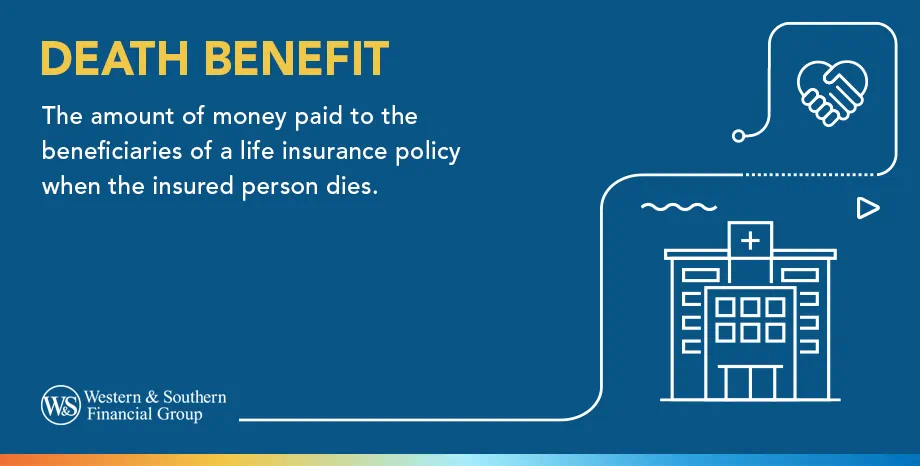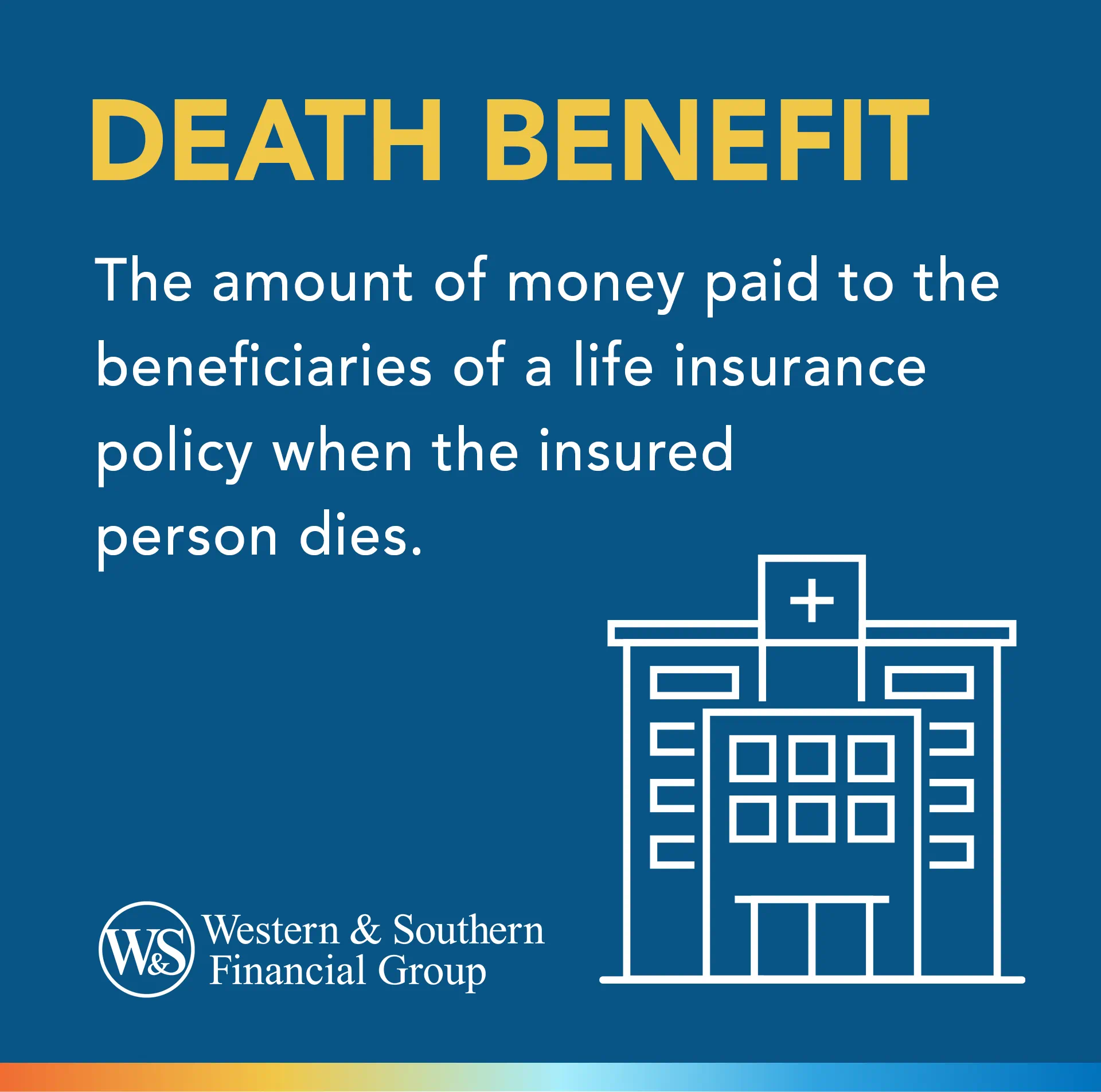

Key Takeaways
- A life insurance death benefit is the payout beneficiaries receive when the insured person dies, providing financial support during a difficult time.
- The amount is determined by the policy type, selected coverage, and any loans or withdrawals made against it.
- Beneficiaries - individuals, trusts, or organizations - must file a claim with documentation to receive the payout, which is often processed within days.
- Most death benefits are generally tax-free, but interest earned or large estates may trigger taxes.
- Understanding payout options and tax implications with the help of a financial professional can help beneficiaries use the funds wisely and efficiently.
If you or a loved one have life insurance, you may be wondering: how are life insurance death benefits paid? Are they taxed? This guide explains everything you need to know about the life insurance death benefit, from how it’s determined and claimed to how taxes may (or may not) apply.
Understanding this process can help you make informed financial choices and prepare for what comes next, especially during an already emotional time when documents, copies, and deadlines for claims matter more than ever.
What Is a Life Insurance Death Benefit?
A life insurance death benefit is the amount of money paid to a beneficiary when the insured person dies. Depending on the type of policy, this could range from a few thousand dollars to several million.
While the insured is alive, they pay premiums to keep the life insurance policy active. As long as the policy remains in force, the life insurance company pays out the entire death benefit to the designated primary beneficiary - whether that’s an individual, trust, or organization.
Who Can Receive the Death Benefit?
The death benefit is paid to the beneficiaries named on the policy, chosen by the policyholder. However, there can be other scenarios how the death benefit is paid out.
| Beneficiary Type | Description | How the Death Benefit Is Paid | Important Considerations |
|---|---|---|---|
| Primary Beneficiary | The recipient of the death benefit when the insured dies. | Obtains the full portion of the death benefit. | If they are not able to receive it, the next beneficiary receives payment (if named). |
| Contingent Beneficiary | The recipient receives funds if the primary is unable to receive it. | Receives the payout only if the primary beneficiary cannot. | Without a contingent, the payout typically goes to the insured's estate. |
| Multiple Beneficiaries | The policyholder designates two or more beneficiaries. | The benefit is split as per the policy terms. | If a beneficiary dies, their share is redistributed unless the policy states otherwise. |
| Trust | A legal entity created to manage assets for others’ benefit (e.g., minors). | The trustee receives the payout and disburses funds per the trust's terms. | Helps control how and when funds are distributed; may also offer tax or privacy advantages. |
| Charitable Organization | A registered charity or nonprofit chosen by the policyholder. | Receives the payout directly, often as part of a legacy or philanthropic plan. | The life insurance death benefit can be tax-efficient if structured correctly. |
| Estate | If no living beneficiaries exist, the estate becomes the beneficiary. | Funds go through probate before distribution to heirs or creditors. | Probate delays access to funds and reduces the amount due to fees and debts. |
| Employer-Sponsored Policy (Group Coverage) | Policies provided through an employer for employees as a workplace benefit. | The beneficiary named by the employee receives the payout. | Without a listed beneficiary, the payout defaults to the estate. |
How Is the Death Benefit Determined?
When someone buys a life insurance policy, they select a coverage amount that works for their financial needs such as income replacement, any outstanding debts, or how to cover their funeral costs.
Factors That Influence the Death Benefit
- Type of Policy: Whole life, term life, and universal life differ in how benefits are structured and maintained.
- Riders and Add-Ons: Options like accidental death riders or cost-of-living adjustments can increase the payout.
- Policy Loans and Withdrawals: Borrowing against cash value can reduce the life insurance death benefit and possibly trigger tax implications if not repaid.1
- Muliple Beneficiaries: The death benefit may be split among multiple beneficiaries if each person is designated to receive a portion of the benefit.
Example
If a policyholder borrows $20,000 from their whole life insurance policy and passes away before repaying it, the life insurance company deducts that amount (plus interest) from the life insurance payout.4
Beneficiaries can view the exact value of the death benefit through the insurer’s online service tool or by requesting official documents showing the policy’s status.
How the Life Insurance Payout Process Works
When the insured passes away, the beneficiary must file a claim with the insurance company. This process involves submitting proper documents to confirm eligibility.
Step-by-Step Overview
- Gather Documentation: Obtain a certified death certificate. Be sure to have copies and originals, as some insurance companies may require both.
- Complete the Claim Form: Include personal details, the policy number, and proof of the insured’s birth date.
- Submit to the Life Insurance Company: Send the completed form and death certificate through the company’s online tool or mail.
- Be Mindful of Deadlines for Claims: Many insurers set clear deadlines for claims, so it’s best to start the claims process within a few days or weeks of the policyholder’s passing.
- Wait for Processing: Most insurance companies issue payment within a few business days once everything checks out.
Potential Payout Options
Beneficiaries can choose how they receive the life insurance death benefit.
| Payout Option | Description | Best For |
|---|---|---|
| Single Payment | A lump-sum payout of the full benefit amount. | Those needing immediate funds for funeral costs, debts, or income replacement. |
| Installments | Regular payments (monthly, quarterly, or annually) over a set period. | Beneficiaries who want predictable income over time. |
| Retained Asset Account | The insurer holds the funds, paying interest until the beneficiary decides to withdraw. | Beneficiaries who need time to plan or grieve before making financial decisions. |
How Quickly Are Life Insurance Death Benefits Paid?
Unlike estate assets that can take months or even a lifetime to settle, life insurance death benefits are designed for speed. Most claims are processed within a few business days once proper documentation is received.
However, delays may occur if:
- The death occurs within the policy’s contestability period (typically two years).
- Locating the primary beneficiary if claimant is not the beneficiary.
- Missing documents or unclear copies cause verification issues.
To track the claim’s progress, most insurers offer online tools or dedicated customer service teams to help beneficiaries every step of the way.
Are Life Insurance Death Benefits Taxed?
Here’s the good news: life insurance death benefits are generally not subject to federal income tax. That means if you receive a $500,000 payout, you’ll typically get the entire death benefit without paying taxes on it. However, there are exceptions to consider:
- Interest Earnings: If you leave the funds with the insurer (for instance, in a retained asset account), the interest you earn is taxable as income.
- Estate Taxes: In 2025, the federal exemption limit is $13.99 million.2 If the deceased’s estate - including their life insurance payout - exceeds that amount, estate taxes may apply.
- State Taxes: Some states levy estate or inheritance taxes with lower thresholds than the federal limit.
- Transfer for Value Rule: If someone sells their policy to another party, the tax implications may differ.
For more details on insurance taxation and oversight, the National Association of Insurance Commissioners (NAIC) offers helpful resources to understand federal and state-level rules.3
Pros & Cons of Life Insurance Death Benefits
| Pros | Cons |
|---|---|
| Provides immediate cash flow to beneficiaries | May be reduced by policy loans or withdrawals |
| Usually bypasses probate for faster access to funds | Potential tax implications if interest is earned |
| Not subject to federal income tax in most cases | Delays possible if within contestability period |
| Flexible payout options (lump sum, installments, or interest-bearing) | Can complicate estate planning for very large estates |
How a Death Benefit Supports Your Financial Situation
The life insurance death benefit can play a key role in stabilizing a family’s financial situation after loss. Depending on your needs, it may be used to:
- Cover funeral costs, hospital bills, and final care expenses
- Replace lost income
- Pay off mortgages or debts
- Fund education for dependents
- Support charitable giving or trusts.
Beneficiaries can structure payouts to align with long-term goals - whether that’s immediate relief or steady income for a lifetime.
When to Talk to a Financial Professional
If you’re unsure how to handle a future life insurance death benefit, consider speaking with a financial professional before the policyholder passes away. They can:
- Help estimate potential tax implications
- Evaluate payout options for your situation
- Integrate the life insurance payout into a broader financial plan
This early preparation can reduce stress later and ensure you use the funds effectively.
Final Thoughts
A life insurance death benefit isn’t just a payout but a financial bridge for loved ones navigating loss. Understanding how it works, how it’s taxed, and what options are available can help you make thoughtful choices during a difficult time.
Whether you’re a policyholder or a beneficiary, knowing the claims process and possible payout options can help offer a sense of financial stability during a difficult time.
A life insurance death benefit provides lasting support to your beneficiaries. Request a Free Life Insurance Quote
Frequently Asked Questions
What documents are required to claim the death benefit?
How do policy loans or withdrawals impact the death benefit payout?
How can the death benefit help with estate planning or covering estate taxes?
Sources and Footnotes
- Life insurance & disability insurance proceeds. https://www.irs.gov/faqs/interest-dividends-other-types-of-income/life-insurance-disability-insurance-proceeds.
- Estate Tax. Internal Revenue Service. https://www.irs.gov/businesses/small-businesses-self-employed/estate-tax.
- NAIC - Resource Center. https://content.naic.org/resource-center.
- Loans will accrue interest. Loans and withdrawals may generate an income tax liability, reduce the Account Value and the Death Benefit, and may cause the policy to lapse.
















































